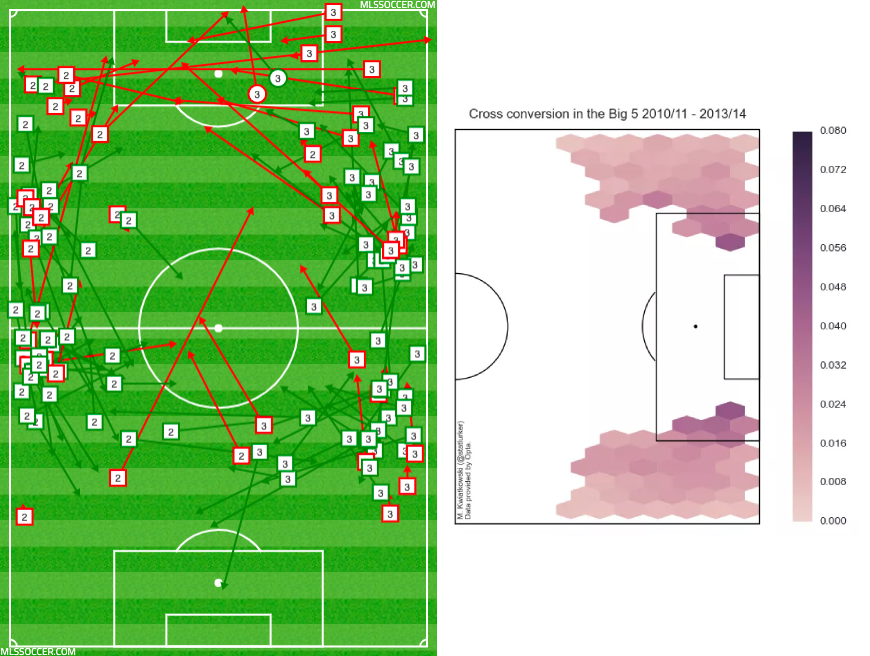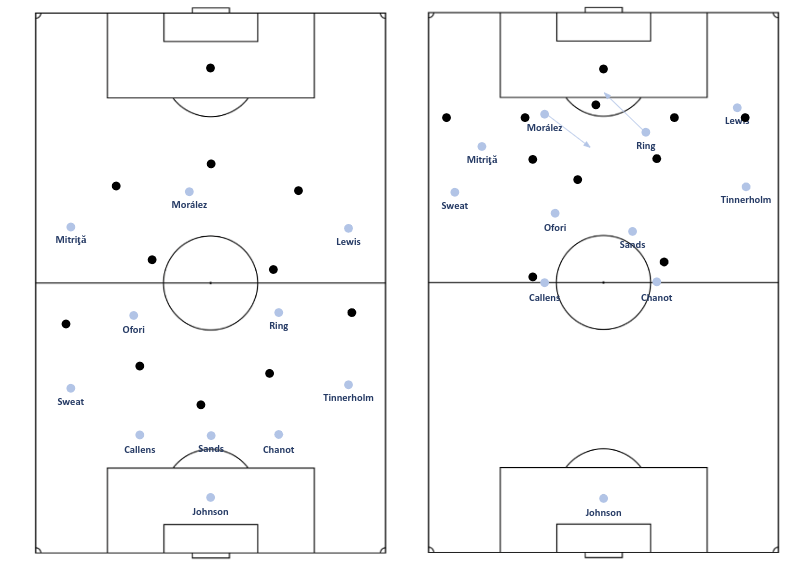Dome’s started to turn flexibility into “sensibility.” But will it translate into wins?
In the winter of 2018, just half a season after emerging from the shadow of Pep Guardiola to become a head coach in New York City, Domènec Torrent made a remark that may come to define his tenure: “What marks everything is not the system but the style of play,” he said, speaking to a publication run by Pep’s longtime biographer. “The system is not so important. What matters is the sensibility you give to the game.”
A couple of months ago, having watched this team stumble through a succession of conspicuously unstylish systems and a record-threatening number of ties, the notion of a philosophy beyond formation felt impossibly distant. As opponents adjust to the 3-4-3, however, Dome’s side is beginning to show that it’s capable of adapting its style of play to a variety of systems. There’s just one problem: the draws have returned.
NYCFC’s last two opponents have attacked the 3-4-3 in different ways. Last week Chicago chose to press high from the beginning, pinning the Pigeons’ wingbacks deep in their half, but this weekend Columbus pressed more selectively, sitting their front line deeper and opting to cut off the passing lanes to Ebenezer Ofori and Alexander Ring. Dropping the line of confrontation also compressed the space between Columbus’s forward and defensive lines, allowing them to set traps for NYCFC to play into.
When Alexander Callens or Maxime Chanot played wide, Columbus overloaded the sidelines. When the ball found its way up the middle, four black shirts were on hand to isolate the ball carrier. Deprived of short passing options, a wobbly NYC began to force plays and botch the line-breaking verticals and switches that were key to the 3-4-3’s early success. In the 25th minute, one of Columbus’s traps finally slammed shut: four defenders pressured Alexandru Mitriţă into giving up possession, launching the counterattack that led to the Gyasi Zardes’s converted penalty.
Columbus’s deep, compact defensive shape created overloads, forced NYCFC into errant passes, and ultimately created the turnover that led to their first goal.
Minutes before the end of the half, Dome abandoned his 3-4-3 for the second match in a row and switched to a 4-2-3-1. Against Chicago, he’d opted for a more defensively-minded midfield. This time, perhaps with the one-goal deficit in mind, he boldly replaced the injured Ben Sweat with Ismael Tajouri-Shradi, sliding Maxi Moralez from a forward slot back into his more familiar central attacking midfield role.
Moving a player from the underpressured back line into the congested zone between midfield and defense allowed NYCFC to flip the overloads that Columbus had been using so effectively to stifle them. In forward and central zones, Moralez drew Columbus’s defensive attention away from Shradi and Mitriţă, opening up the long, vertical passing lanes again. When play shifted to wide areas, Maxi pushed toward his winger, forming a triangle with the ball-side defensive midfielder to tip the numbers in New York City’s favor. The overloads drew Columbus’s midfielders out of the center, allowing NYCFC to run free. The equalizer started on the left side, swept through a vacant midfield to the opposite wing, and finished with Héber galloping forward to pass the ball into the net.

Left: Columbus’s deep line of confrontation gave them the numerical advantage in the midfield. Right: After the first formation switch, NYCFC’s extra midfielder flipped the overloads.
After a rare error from Ring gave Columbus the lead for a second time, Dome reached for an even more aggressive gear, bringing on Valentín Castellanos for Ofori and reshaping his side into a 4-4-2 diamond. This second change of system improved NYCFC’s numbers in the center again, and the glut of attacking players allowed Maxi to drop deeper and get involved earlier. By replacing Ofori’s more controlled passing with Maxi’s verticality and ability to turn on the ball, NYCFC created a flurry of chances that culminated in Taty’s stunning long-distance equalizer.
Shifting to a diamond gave Maxi more influence over the game and improved NYCFC’s chance creation from deep areas.
NYCFC’s budding adaptability will give opponents more to think about, as the team translates the free-flowing attacking play of the 3-4-3 into a variety of formations, but the same applies for its own players. Both Ring’s uncharacteristic error in the build-up and Callens’ inability to get back on defense for Columbus’s second goal could easily be chalked up to the tactical flux, a worrying reminder that flexibility often comes at the expense of familiarity. Changing formations saved a road draw, but it may have cost a road win.
Thursday’s match-up with a struggling Cincinnati would ordinarily be an opportunity to consolidate, but international call-ups and injuries have left Dome without four or five regulars. Looking ahead, prospects for stability look even slimmer, with the U.S. Open Cup, international competitions, and another long break looming. NYCFC’s newfound sensibility ought to help carry the team through another stretch of adaptation—but if we settle into another rut of boring draws, ideals may not matter much at all. ❧
Image: Stefano della Bella, Thirty-Six Acrobats in Six Groups










